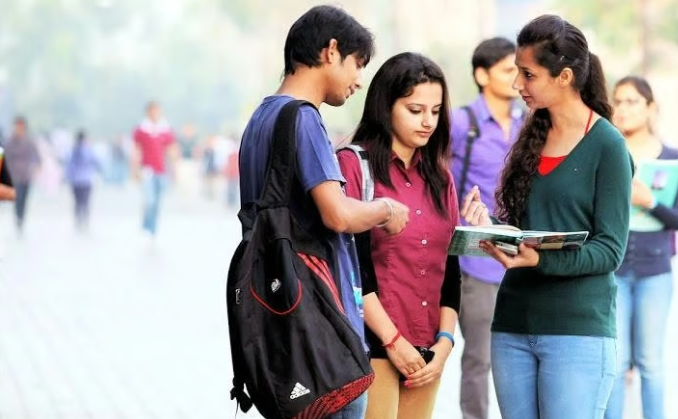India's Science Stream Standouts: Andhra Pradesh Leads with 75.63% Pass Rate

Unveiling Science Stream Excellence: A Full Analysis of Performance by State in India
Science students’ performance is a key measure of a nation’s scientific knowledge. As we celebrate National Science Day in 2024, the Department of School Education & Literacy, Ministry of Education, releases convincing statistics on Indian states’ accomplishments. Andhra Pradesh leads with a 75.63% Science pass percentage. This outstanding accomplishment shows students’ passion and the state’s commitment to scientific investigation and education.

Data shows that Andhra Pradesh is committed to academic quality, as seen by its constant rise in Science. The following study examines Andhra Pradesh’s achievements and India’s educational environment. Read more Bye Bye Rote Learning? CBSE Considers Open Book Examinations (OBE) for 4 Million Students

State-Wide Science Stream Performance Highlights
Andhra Pradesh has the best passing rate in the country, with 75.63% in the Science stream. This shows that the state’s students have been getting better grades over the years. This shows that the state is serious about raising a group of people who are interested in science. Manipur is right behind them with a respectable 68.87% pass rate. Even though things have changed in the past few years, Manipur has a strong academic spirit and makes a big contribution to the country’s science conversation.
On top of that, Telangana, Tamil Nadu, and Uttar Pradesh all do very well on the Science stream exams, which is a big plus for education in general. With pass rates of 64.59% and 61.5%, respectively, Telangana and Tamil Nadu are two places that put a lot of stress on education, and the results of their students show it. With a pass rate of 57.48%, Uttar Pradesh stands out as a major source of science ability, despite problems in the area.


Key Statistics
- The pass rate in Andhra Pradesh is 75.63%.
- Manipur: 68.87% of students pass
- Telangana: 64.59% of students pass
- Tamil Nadu has a 61.5% pass rate.
- Uttar Pradesh: 57.48% of students pass
Insights into Additional States
By adding Maharashtra and Bihar to the study, we can get a fuller picture of the educational scene. With its wide social and economic makeup, Maharashtra has a large student body—6.1 lakh people pass in the Science path. This shows that the state is serious about giving its kids a good education and encouraging them to think like scientists.
Bihar faces unique difficulties and successes in education, as shown by the fact that 4.25 lakh students pass in the Science stream. Even though socioeconomic factors affect participation, Bihar continues to make a big difference in the pool of science ability. This shows how strong students and teachers are when they have to deal with problems and do well in school.

Enrollment Trends and Educational Disparities
In terms of registration trends and educational disparities, Andhra Pradesh does very well in the Science stream, but Uttar Pradesh has the most students and the most passing grades, with 11 lakh students. This big difference between the percentage of students who passed and the number of students who signed up shows how complicated the school system is. It also shows how important it is to do complex studies that take into account differences between regions, their economies, and the building of infrastructure.

Challenges and Strategic Solutions
India’s school system faces several problems, such as rising tuition fees and fewer students attending public schools. Key goals include lowering the number of students who drop out, improving school facilities, and making learning materials easier to get to. Also, major changes need to be made at both the basic and higher education levels to help build a skilled workforce and encourage growth through innovation.
Final Note

On National Science Day, Andhra Pradesh’s science students shine a light on India’s scientific future. The remarkable 75.63% pass rate represents academic accomplishment and a communal investment in scientifically motivated youth. While recognising Andhra Pradesh’s successes, educational ecosystem concerns must be addressed.
Strategic changes and focused interventions are needed due to state pass rates, growing dropout rates, and structural difficulties. Educational cost reduction, infrastructural improvement, and innovation-driven learning environments are crucial. India can create a more equitable, accessible, and competitive education system by tackling these concerns.
Finally, National Science Day is a time to reflect, celebrate, and improve India’s education system. Let us celebrate Andhra Pradesh and other state students’ successes and work together to create an atmosphere where every student may succeed and contribute to the nation’s scientific and technical progress.
Also, read






